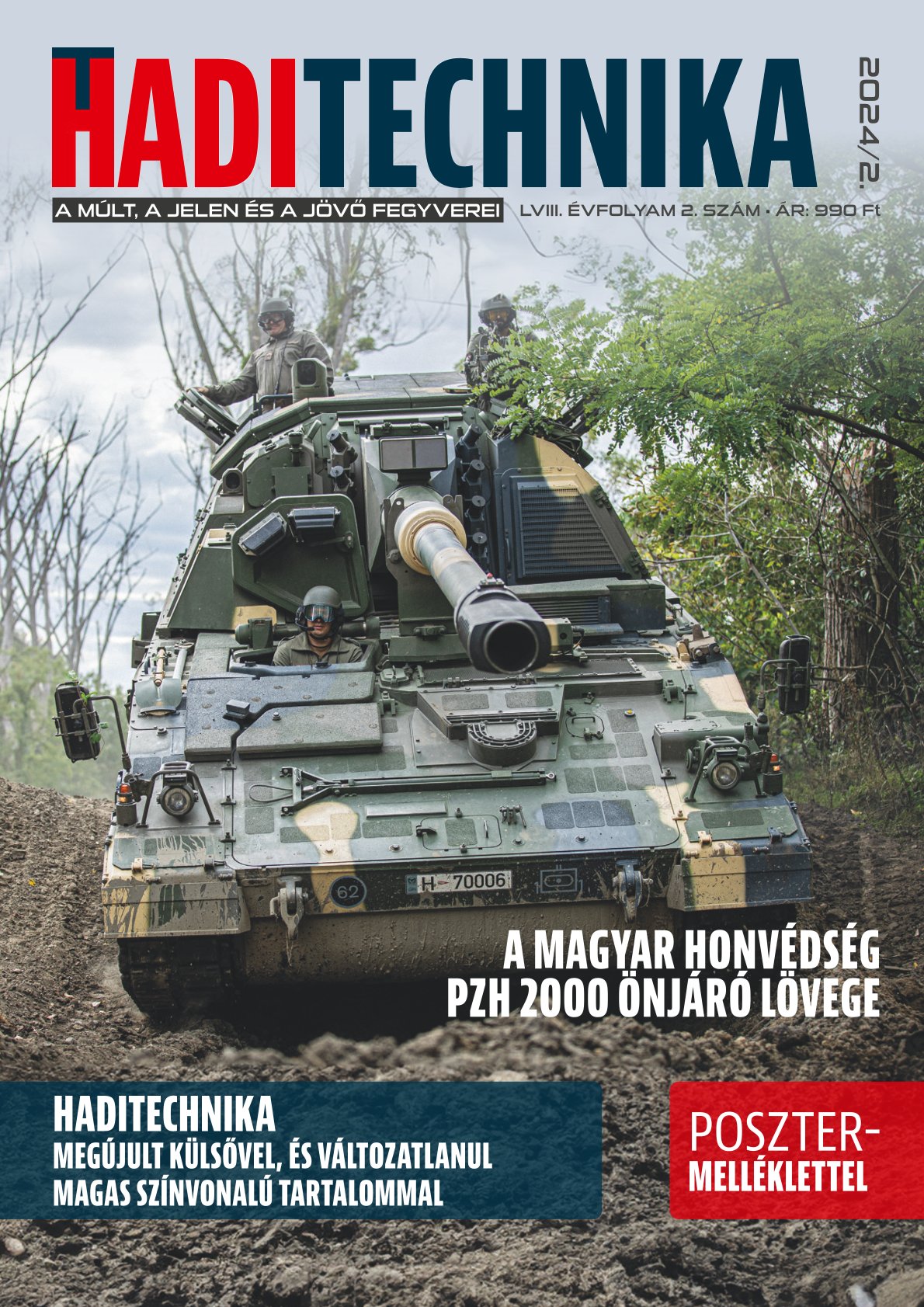A légi tűzoltás hatékonyságának tűzoltástaktikai megközelítése
DOI:
https://doi.org/10.23713/HT.58.2.11Kulcsszavak:
légi tűzoltás, tűzintenzitás, szóráskép, hatékonyság, I4F technológiaAbsztrakt
A nagy kiterjedésű és intenzív tüzek elfojtásához rendszeresen alkalmazunk repülőgépeket, amelyek bár gyakran hasznosak, de bevetésük sajnos nagyon költséges is. A hatékonyság növelése érdekében, a repülőgépek képességeinek ismerete mellett érdemes a tűzoltástaktikai jellemzőket is megismerni. A szerző áttekintést nyújt a hatékonyságot befolyásoló tényezőkről, valamint bemutat
egy olyan hazai fejlesztést, amely jelentősen növelheti a repülőgépek alkalmazásának előnyeit.
Hivatkozások
2011. 1. 2011. évi CXXVIII. törvény a katasztrófavédelemről és a hozzá kapcsolódó egyes törvények módosításáról;
26/2021. (XII. 17.) HM rendelet a honvédelmi ágazat katasztrófák elleni védekezésének irányításáról és feladatairól;
Szerényi-Salamon, T., Somogyi, Z. (2023) A Magyar Honvédség légi tűzoltó képességének fejlesztési lehetőségei, Haditechnika, 57 (5) pp.
–56.;
Xanthopoulos, G., Leone, V., Delogu, G.M. (2020) The suppression model fragilities: The “firefighting trap”, Extreme Wildfire Events
and Disasters, 2020, pp. 135–153. https://doi.org/10.1016/B978-0-12-815721-3.00007-2;
Byram, G. M. Combustion of Forest Fuels, In. Forest Fire: Control and Use (1959) pp. 61–89. New York: McGraw-Hill, United States;
Alexander, M. E., Cruz M. G. (2012) Interdependencies between flame length and fireline intensity in predicting crown fire initiation and crown scorch height, Int’l Journal of Wildland Fire, 21, pp. 95–113. https://doi.org/10.1071/WF11001;
Restas, A. (2023) Examining the Effectiveness of Aerial Firefighting with the Components of Firebreak Requirements and Footprint
Geometry—Critics of the Present Practice. Fire , 6, 351. https://doi.org/10.3390/fire6090351;
Simon B; Crowley C.; Franco F. (2022) The Costs and Costs Avoided From Wildfire Fire Management—A Conceptual Framework for a Value of Information Analysis. https://www.frontiersin.org/articles/10.3389/fenvs.2022.804958/full;
Restas, A. (2020). Hungarian - Slovakian Cooperation Making Aerial Firefighting More Effective: Error Analysis. In: Makovicka O, L., F.,
Zelinka, S. (eds) Wood & Fire Safety. WFS 2020. Springer, Cham. https://doi.org/10.1007/978-3-030-41235-7_54;
Christopher, B. (2016) Does Using Airplanes to Put out Forest Fires Actually Work? Priceonomics, 11.07.2016, https://priceonomics.com/does-using-airplanes-to-put-out-forest-fires/ (Letöltve: 2022.8.22.);
Szelestey, Gy. (1974) Áramlástan IV. Helikopter aerodinamika, Tankönyv, Szolnok, Kilián György Repülő Műszaki Főiskola p.130.;
Jambrik, R. (2007) Légi támogatás nélkül nehéz lett volna, Védelem, 14 (6) pp. 51–53., Budapest, ISSN: 1218-2958;
„Super Puma Fire Fighting Routine Training Mission Swiss Air Force at Axalp 2012,” https://www.youtube.com/watch?v = Shn5ChpOHgs
(Letöltve: 2015.12.6.);
Restás, Á. (2012) Légi tűzoltás instant habbal: I4F technológia, Repüléstudományi Közlemények 24 (2) pp. 490–501.;
Hardy, C. Chemicals for Forest Fire Fighting. Study (1985) NFPA, National Fire Protection Association, Boston, United States;
Plucinski, M. P.; McCarthy, G.; Gould, J. (2005) Aerial Suppression Experiment. Ensis Technical Report No: 153, Ensis, Bushfire Research CSIRO, Cambridge, Tasmania, Australia, 21-23.02.2005;
Tomé, M.; Borrego, C. (2002) Fighting wildfires with retardants applied with airplanes. Forest Fire Research & Wildland Fire Safety, Viegas (ed.) Millpress, Rotterdam, p. 133, ISBN 90-770117-72-0;
Csontos, P., Cseresnyés, I. (2007) Feketefenyvesek tűzveszélyességi viszonyainak elemzése. In: Csontos P. (ed.) Feketefenyvesek ökológiai kutatása. Scientia Kiadó, Budapest, pp: 57–79.;
Satoh, K., Maeda, I., Kuwahara, K., Yang, K.T. (2005) A Numerical Study of Water Dump in Aerial Fire Fighting. Fire Safety Science, 8 pp. 777–787. http://doi:10.3801/IAFSS.FSS.8-777;
Pekić, Z. (2007) High rate spray technique – a new way for effective aerial wildfire suppression. Wildfire 2007 Conference Seville, Spain,
-17.05.2007;
I4F – Instant Foam for Fighting Forest Fires, EU Cordis, Horizon 2020, Grant agreement ID: 711160 https://doi.org/10.3030/711160;
Restás, Á. (2014) Suppression capability of foams used fighting against forest fires with the test of weight rate remained on the crown surface R-10A Method - weight effectiveness experiment, In: Domingos, X.V. (ed.) Advances in Forest Fire Research, Coimbra, Portugália, 1529–1536. https://doi.org/10.14195/978-989-26-0884-6_168;
Restás, Á. (2014) Results of the R-20F Method for Measuring the Water Equivalence of the Isolation Effect of Foams Used in Fighting Forest Fires, In: Domingos, X.V.(ed.) Advances in Forest Fire Research, Coimbra, Portugália, 1485–1495. https://doi.org/10.14195/978-989-26-0884-6_163






